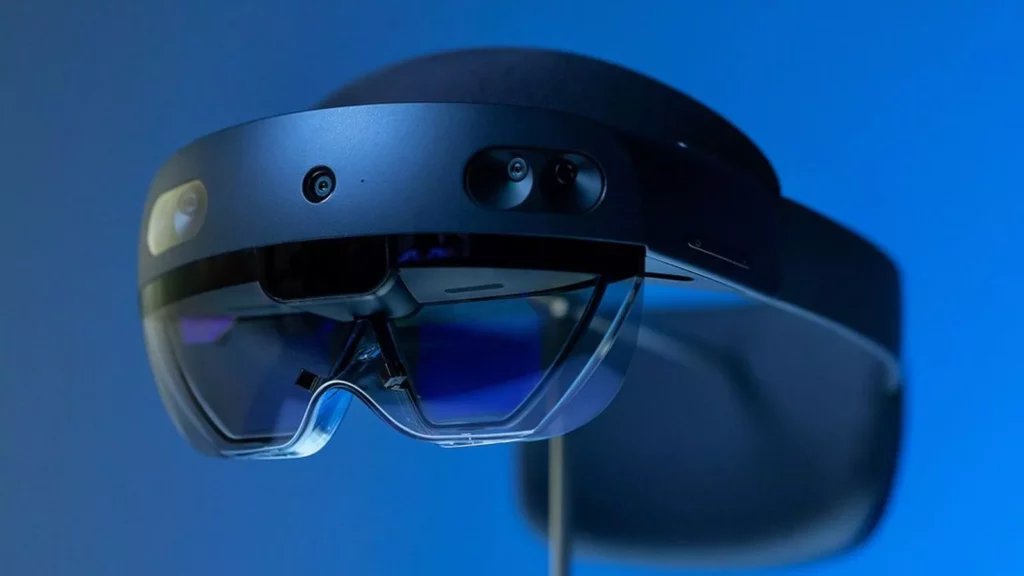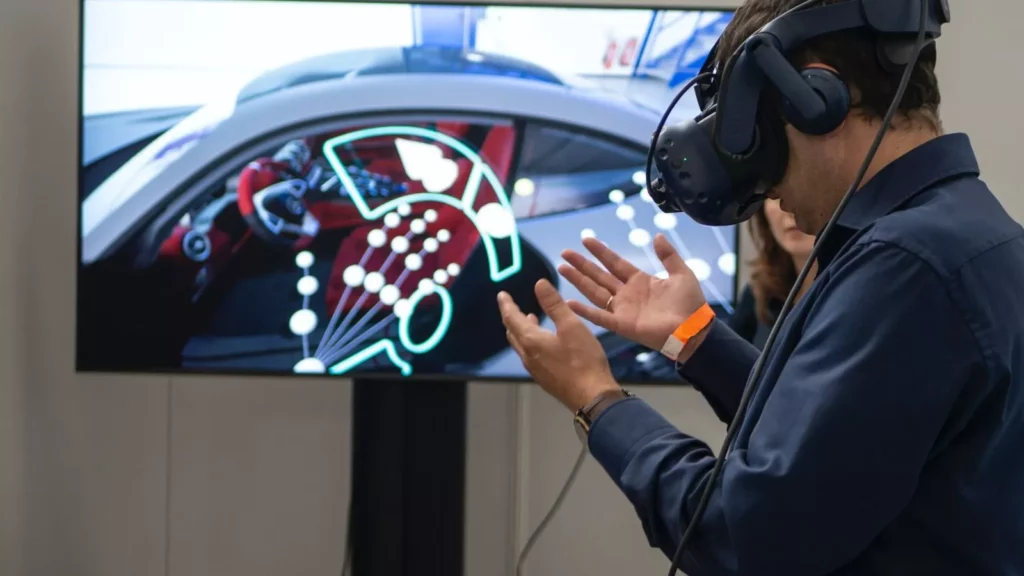Spatial computing glasses are a new technology that is in the early stages of development. They are a type of wearable device that combines virtual reality and augmented reality capabilities. The user wears these glasses and then sees computer-generated content in their field of vision. This content can include anything from text to pictures videos and more.
The user can interact with this content by moving their head or hands, which allows them to click on buttons or scroll through text, for example. These glasses may also have voice commands so that the user can interact with the device without having to use their hands at all.
The first spatial computing glasses were introduced in 2016 by Microsoft. They were called “Microsoft HoloLens” and they were the first smart glasses to combine holographic 3D projections with real-world objects.
The HoloLens was mainly used as a tool for designing and engineering purposes. It was also used in medicine, architecture, and education.
In 2018, Magic Leap released their own version of spatial computing glasses called “Magic Leap One” which became the second major player in this market category after Microsoft’s HoloLens had been dominating for years before Magic Leap One was introduced.
Magic Leap One is a wearable device that is designed to be worn like a set of glasses and is intended to improve the user’s experience with imagery, sound, and spatial computing.
Table of Contents
- Why Are Spatial Computing Glasses So Important?
- What are the Different Types of Spatial Computing Devices?
- Why do you need to know about the new technology?
- Are Spatial Computing Glasses Really Good for Everyday Consumers?
- What are the Best Uses of Spatial Computing Glasses?
- Conclusion:
Why Are Spatial Computing Glasses So Important?
In the future, we will see spatial computing glasses as a necessity in everyday life. They will not just be used for leisure but also for work. They will be used to help people with disabilities and also to improve the efficiency of workers who are performing repetitive tasks.
Spatial computing glasses are important because they provide a new way to interact with technology and the world around us. They allow us to go beyond simply seeing content on our screens and actually experience it in 3D space.
What are the Different Types of Spatial Computing Devices?
Augmented Reality (AR) glasses and virtual reality (VR) headsets are the two most popular types of spatial computing devices.
AR glasses are more like wearable computers because they have a screen that is closer to the user’s eyes. They overlay digital information on top of what you see in the real world, so you can interact with virtual objects in your surroundings.
VR headsets are completely immersive, so you will only see what is being projected inside the headset. You can explore different worlds and interact with them just like you would in the real world.
Why do you need to know about the new technology?

Augmented reality is a technology that will change the way we interact with the world. Augmented reality is not a new concept but it has only recently begun to be used in popular culture. The future of augmented reality is looking brighter and brighter every day as more and more people are beginning to get on board with this technology.
An example of augmented reality is when a person uses their smartphone to watch a movie. The smartphone will project the images from the movie into the air before the viewer’s eyes, giving them an immersive experience.
Now Virtual Reality (VR) is a computer-generated experience that places the user in a digitally generated environment.
It can be experienced through, for example, head-mounted displays or with specialized equipment, enabling users to interact in ways impossible in the real world.
Are Spatial Computing Glasses Really Good for Everyday Consumers?

The idea of spatial computing glasses is still in its infancy. There are a lot of companies that are trying to make them more mainstream and everyday consumers. The question is, will they be truly good for everyday consumers?
For one, spatial computing glasses can be very expensive and they may not be worth the investment for some people.
Secondly, wearing these glasses can make people feel dizzy or nauseous when they use them for long periods of time.
Lastly, these glasses are still in their early stages and there is no guarantee that they will become mainstream technology anytime soon.
All these things conclude that spatial computing glasses can’t be good for everyday consumers.
What are the Best Uses of Spatial Computing Glasses?

Spatial Computing Glasses are the next big thing in the world of digital technology. With them, we can now have a more immersive and interactive experience with various products and services.
The best uses for this new technology are to help us with:
- 3D modeling and designing
- Virtual tours
- Remote assistance
- Medical assistance
3D modeling and designing
The most common application of these digital glasses is to help with 3D modeling and designing. With this new technology, we can now use small cameras and projectors to create virtual designs that you can see on a screen in front of your eyes. This type of technology has the ability to save time, money, and energy.
Virtual tours
With the help of these glasses, we can have virtual tours. This is a great way to show something that cannot be seen in person, such as how your house looks from space or how a new business will look in front of you. These glasses also help with augmented reality and remote assistance.
Remote assistance
The glasses are designed to have a screen on them so we can have video chats when you are far away. This is especially useful for those who can’t leave their house like students who have to do homework at home or people who are housebound due to illness.
Medical assistance
With these glasses, doctors can view complicated X- rays and CT scans. They can also view 3D body images from MRI scans and CT scans. This provides doctors with a much clearer understanding of what they are looking at, which can make it easier to perform surgery or treat patients.
Conclusion:
The future of spatial computing glasses is bright. With the development and improvement of augmented reality, the use cases are endless. From 3D modeling to medical assistance, spatial computing glasses will soon become a necessity in our lives. It’s never too early to begin thinking about how you will benefit from them. But as new technologies adapt, they also come with some pros and cons.





